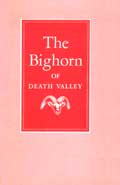.gif)
MENU
![]() Photographs
Photographs
|
Fauna of the National Parks — No. 6
The Bighorn of Death Valley |

|
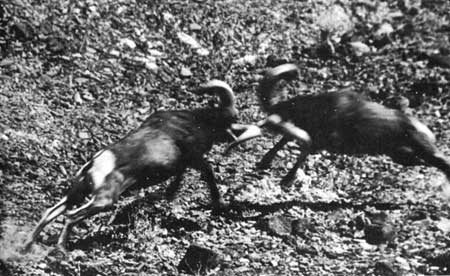
Figure 57.—The remarkable
synchronization of movement pictured here is the rule, not the
exception. Every effort seems to be made to insure a perfect head-on
and balanced contact. Note that both heads are tilted to the same
side.
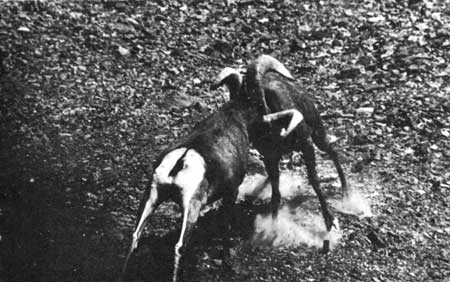
Figure 58.—Sometimes the
heads are tilted in opposite directions, resulting in a blow on the
forehead itself instead of on the horns, but the encounter is still
head-on and in balance.
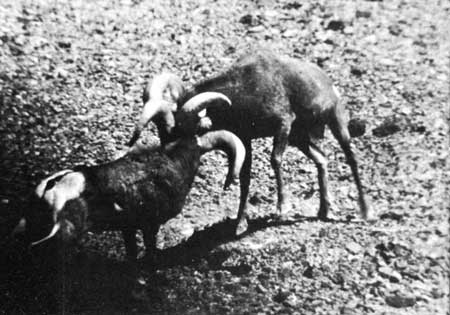
Figure 59.—Occasionally one
slips or miscalculates and a severe neck-twisting or nose-smashing can
result. Tabby, the ram on the left, has a scar on the right side.
Broken Nose has a dark patch on the left horn. Tabby has not watered
for 3 days, and shows the gauntness and rough coat of
dehydration.
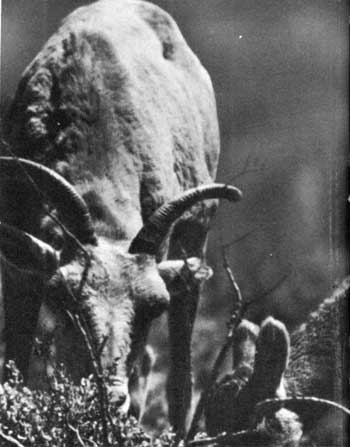
Figure 60.—This 7-year-old
ewe was captured and brought to the Desert Game Range in 1947 when she
was a lamb. Here 6-week-old lamb was born in 1954 and registered in the
Desert Game Range genealogy as "female No. 7."
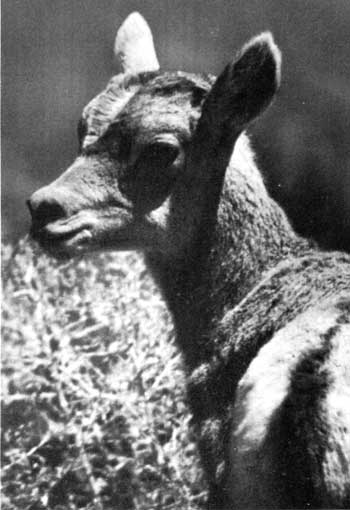
Figure 61.—This is "female
No. 7," when 6 weeks old in April 1954. At this age, the previously
ill-defined rump patch turns white. The horns have not appeared, but
the characteristic tufts of hair often are mistaken for beginning
horns.
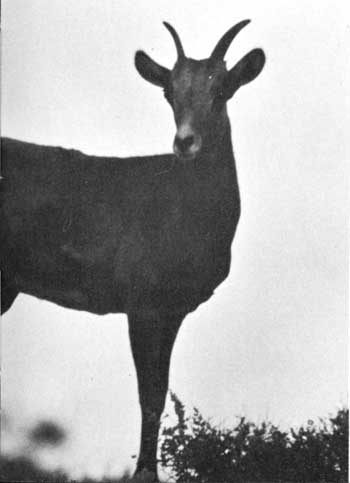
Figure 62.—"Female No. 7,"
when 7 months old in October 1954.
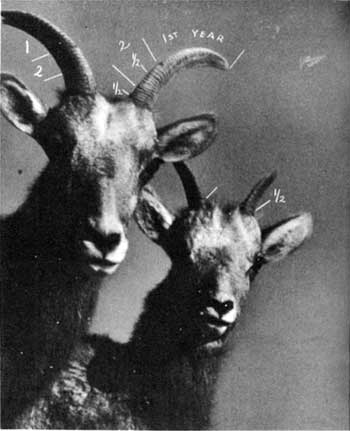
Figure 63.—"Female No. 7,"
when 2 years and 7 months old in October 1956, accompanied by her
6-1/2-month-old ewe lamb, which was born on April 4, 1956. These
relatively inconspicuous "extra" growth rings appear fairly often in
ewes.
Continued >>>
 Top
Top
Last Modified: Thurs, May 16 2002 10:00:00 pm PDT
http://www.cr.nps.gov/history/online_books/fauna6/faunap8.htm
![]()
